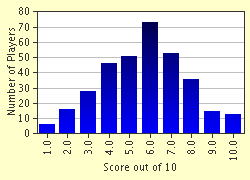Quiz Answer Key and Fun Facts
1. Which Welsh castle was built from 1283 onwards by Edward I, to defend the newly conquered region against local uprisings, and was supposedly the birthplace of the first (English) Prince of Wales?
2. Edward I built an 'iron ring' of castles round Snowdonia, in North Wales, designed to keep control of the area firmly in English hands. Which of these castles does NOT form part of this 'iron ring'?
3. Harlech Castle is one of the most famous in Wales, thanks to its beauty and impressive defences. Which of these defensive features is NOT part of Harlech Castle?
4. This castle is on the island of Anglesey, and building was begun in 1283. The architect was also responsible for the castles at Caernarfon and Harlech, but planned his most ambitious project here. There was a moat, filled with tidal water, and a beautifully symmetical arrangement of walls and towers. Sadly, the castle was never completed. What is its name?
5. What name is given to the 'saw-toothed' walls on top of castle towers and walkways, built to protect soldiers from attack by arrows?
6. This Welsh Castle is famous for its inclusion of walls encirling the entire town, with 21 guard towers at regular intervals. The scheme meant that any attackers who succeeded in getting access to one area could be cut off by soldiers from one of the other towers. What is its name?
7. Caerphilly Castle, in South Wales, was built by the powerful lord Gilbert de Clare. There are several concentric walls as well as an inner and outer moat, which made it almost impossible to enter. During which century was construction begun?
8. What was the intended purpose of the 'donjon'?
9. The Welsh population was only allowed into Edward I's walled towns during daylight. Is this true or false?
10. What is true about Dolbadarn Castle?
Source: Author
Elanor
This quiz was reviewed by FunTrivia editor
bloomsby before going online.
Any errors found in FunTrivia content are routinely corrected through our feedback system.

